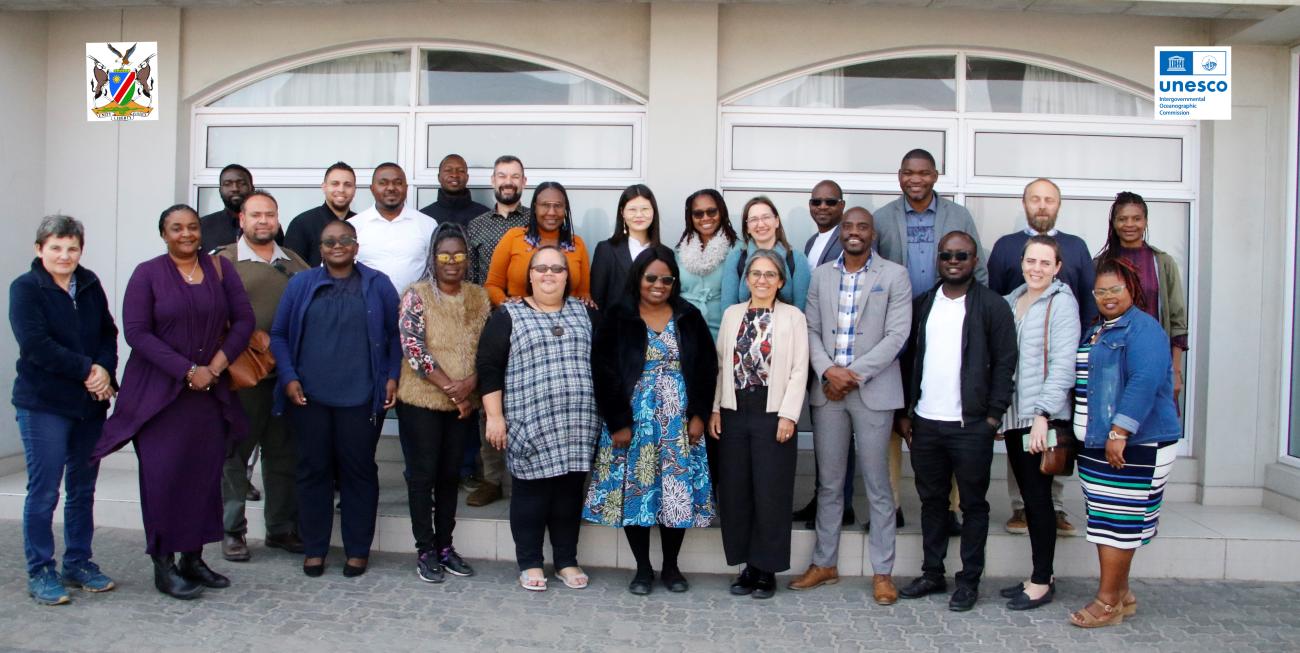Towards an Early Warning System for Harmful Algal Blooms in Namibia

The workshop marked the starting point of the development of an early warning system for HABs in Namibia combining monitoring with mitigation and adaptation.
IOC-UNESCO and Namibia’s Ministry of Fisheries and Marine Resources organized major consultation to assess the specific needs and requirements for establishing an early warning system for harmful algal blooms in the Southern African country.
About 300 hundred species of microalgae are reported at times to form mass occurrences, so-called algal blooms. Nearly one-fourth of these species are known to produce toxins harmful to nature and to human beings, and the scientific community refers to these algal events as ‘Harmful Algal Blooms’ (HAB).
Proliferations of microalgae in marine or brackish waters can cause massive fish kills, contaminate seafood with toxins, and alter ecosystems in ways that humans perceive as harmful.
The impact of harmful microalgae is particularly evident when marine food resources (e.g. fisheries and aquaculture) are affected. Even though not all species are visibly affected by harmful algal blooms – such as shellfish and finfish –, they accumulate the toxins in their organs and subsequently transmit them to humans through consumption, leading to serious health threats.
“In the interest of food safety for the end consumer, an early warning system for HABs will serve as a food safety intervention tool to identify potential risks required to be managed; to maintain consumer and customer confidence; and to expand national, regional and international trade through the promotion of a safe seafood commodity.” - Heidi Skrypzeck, the Ministry of Fisheries and Marine Resources in Namibia
Monitoring of harmful algal blooms is essential in providing forecasts and early warnings for a potential HAB event, enabling regional authorities, industry, or individuals to take actions to mitigate public health, environmental, or economic risks and impacts.
The 5-6 October workshop gathered 32 participants from government ministries, the private sector, academic institutions, and official laboratories to define the early warning system requirements for Namibia, review current capacities and resources in place, and outline missing knowledge and data gaps.
As a result of collaboration between the Government of Namibia, UNESCO’s Intergovernmental Oceanographic Commission (IOC-UNESCO) and UNESCO’s Windhoek Office, the workshop marked the starting point of the development of an early warning system for HABs in Namibia combining monitoring with a mitigation and adaptation strategy.
“Through its Intergovernmental Oceanographic Commission, UNESCO strives to assist Member States in managing and mitigating the impacts of harmful algae, essential for a productive and sustainable seafood industry.” - Henrik Enevoldsen, Head of Ocean Science at IOC-UNESCO
The workshop helped national stakeholders identify and share the main causes and effects of harmful algal blooms in Namibia, including mortalities, human food poisonings, ocean oxygen depletion, and the associated economic and ecological impacts – in particular on the export of shellfish products.
Participants identified an urgent need to establish a rapid monitoring and regulatory framework to ensure the protection of human health and safe seafood trade from the regular occurrence of harmful algae in the country.
“Engaging from the beginning with the different stakeholders is crucial to ensure that the early warning system being developed will eventually effectively meet their specific needs.” - Marie-Yasmine Dechraoui Bottein, invited expert from the University of Côte d’Azur



